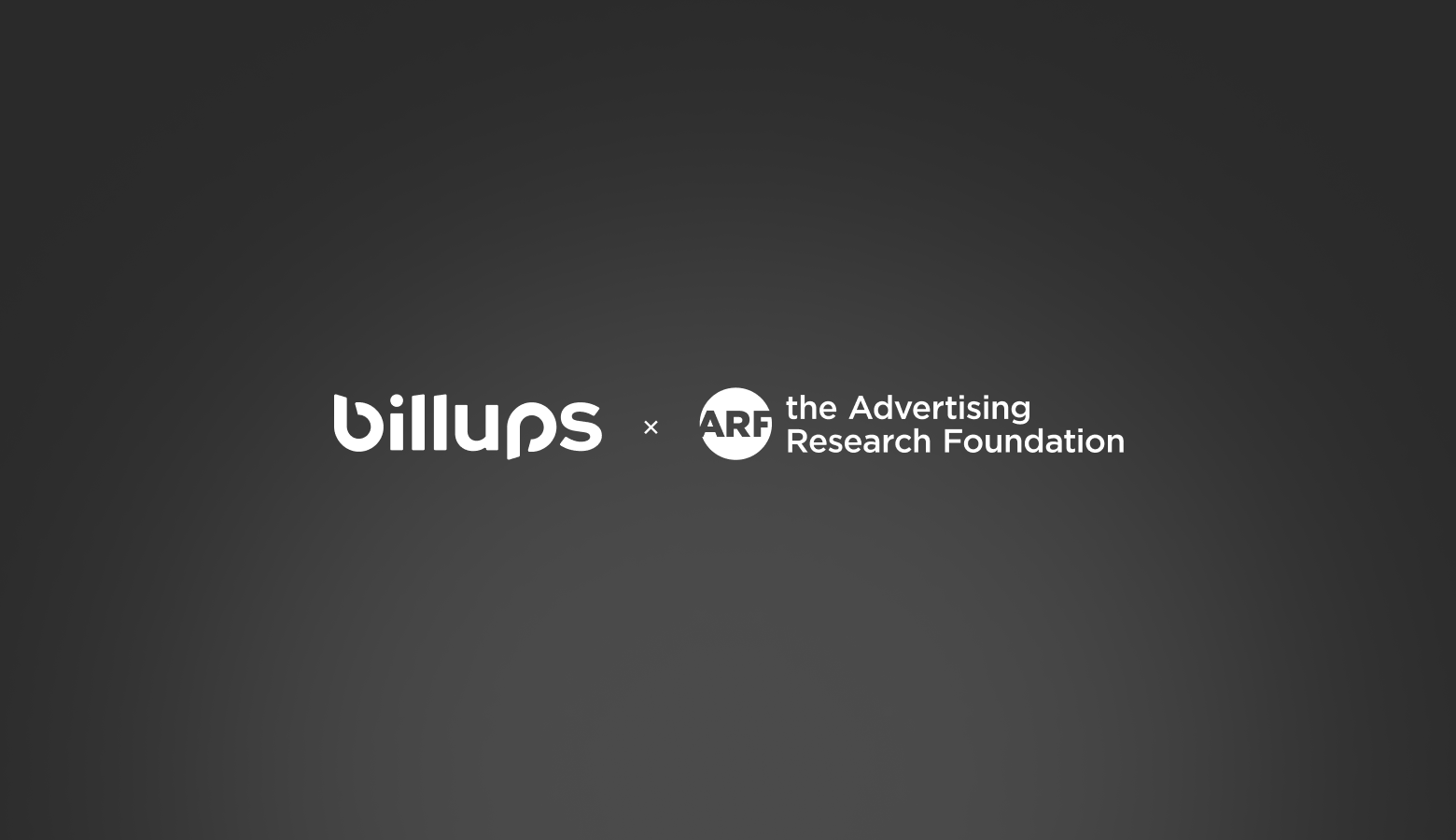Measuring Attention in OOH Campaigns

In this article, Shawn Spooner, Chief Technology Officer (CTO) at billups, and Elizaveta Shcherbina, Product Manager at billups, delve into the crucial role of audience attention in outdoor advertising. They explore the concept of the Attention Metric in Out-of-Home (OOH) advertising, discussing its significance, the key factors influencing attention, and how billups' advanced technologies can help brands optimize their OOH campaigns for maximum impact.

Considering a target audience’s “attention” in public spaces is pivotal for brands looking for substantial ROI on their outdoor advertising.
The attention metric in Out-of-Home (OOH) advertising refers to levels of engagement and cognitive processing an audience allocates to a given advertisement.
It measures the extent to which individuals actively process and engage with an ad, absorbing its message and visual elements, and evaluates whether their attention was captured and retained.
Let’s take a closer look at the importance of attention to OOH campaigns, the key factors that influence it, and how billups can help your brand can craft and measure outdoor campaigns with lasting impacts on consumers:
.png)
Why Attention Matters in OOH
Every outdoor advertiser wants their campaign to land with the right audience.
There are a few essential factors to consider when pursuing this goal:
Creativity: Innovative and eye-catching designs, colors, and formats are more likely to grab attention.
Relevance: Ads relevant to the audience in a specific location or context are more likely to be seen and remembered.
Location: The placement of OOH ads in high-traffic areas or strategic locations in ideal moments or periods can significantly impact attention.
.jpeg)
Brands that deeply consider these factors are far more likely to produce campaigns that yield higher message retention, increase brand awareness, and make behavioral impacts—driving consumer actions like purchasing decisions.
This is especially important when considering the inherent obstacles to OOH campaigns, such as:
Clutter: Advertising density in certain OOH environments can make it challenging for campaigns to stand out.
Ad fatigue: Overexposure to the same ad may lead to reduced attention over time.
Distractors: External factors like noise or competing visuals may divert attention away from the outdoor ad.
Measuring Attention in OOH
Rapidly evolving technological advancements continue to facilitate improved measurement of an OOH target audience’s attention. Let’s explore some key examples:
Sensors and cameras
How it works: Physical sensors and cameras installed near outdoor advertisements can capture data on the number of people passing by, their dwell time (time spent looking at the ad), and even demographic information.
Applications: This technology provides real-time data on audience behavior, allowing advertisers to assess the effectiveness of campaign placement.
Mobile and beacon technology
How it works: Mobile devices using Bluetooth or beacon technology can interact with OOH units. Advertisers can track when users with enabled devices come close to the ad, accessing data on foot traffic and potential engagement.
Applications: This technology facilitates location-based targeting and engagement tracking, allowing advertisers to understand the impact of OOH campaigns on mobile users.
Computer vision and machine learning:
How it works: Machine learning algorithms can process large datasets of images, identifying objects that people pay more attention to and discovering watchers' patterns.
Applications: Image analysis can specifically show all available viewpoints for a unit, yielding a “heatmap” of attention distribution. This facilitates the calculation of the probability a unit will be seen and capture attention. Moreover, advertisers can use these details to build customers' routes to their units.
billups Attention Technology
At billups, we combine the above technologies to understand better how a specific campaign can capture audience attention and encourage them to interact with the advertising brand.
In each location where an OOH unit is seen, we can analyze the range of viewpoints and identify the numerous complex factors affecting how a person perceives the advertisement.
Next, we can directly measure the unit positioning, environment, dwell time, and hundreds of other parameters that can be properly interpreted thanks to billups’ OTE patented technology. This data is then applied to the attention distribution picture and combined with our viewpoint analysis.

With this technology, we can measure not only whether the ad was seen but also if it was absorbed and remembered by the target audience. This lets us know how ‘catchy’ the unit and the advertising it displays are.
Attention Measurement in Action
In addition to determining a unit’s optimal placement, billups uses attention mapping technology to assess whether a brand’s OOH creative suits its campaign goals.
To illustrate this process, take a look at the below video which shows our technology activated against a piece of creative: The aim is to evaluate the effectiveness of the creative to create ads that attract the optimal amount of attention to the branding and use our algorithm to make those recommendations. As you can see, the company branding, located in the center of the creative is attracting a major share of the audience's attention, this is denoted by the lighter coloring.
Want Attention-Grabbing OOH?
While attention analysis technologies are constantly developing thanks to an increasing range of diversified data and human behavior studies, they already show promise in optimizing OOH campaigns.
Determining the “how” and “why” behind successful outdoor advertising is no longer a guessing game.
At billups, we have in-house attention specialists who can work with you to create and implement OOH that grab your target audience’s attention. Contact us today!
Helpful resources
Explore our article library



